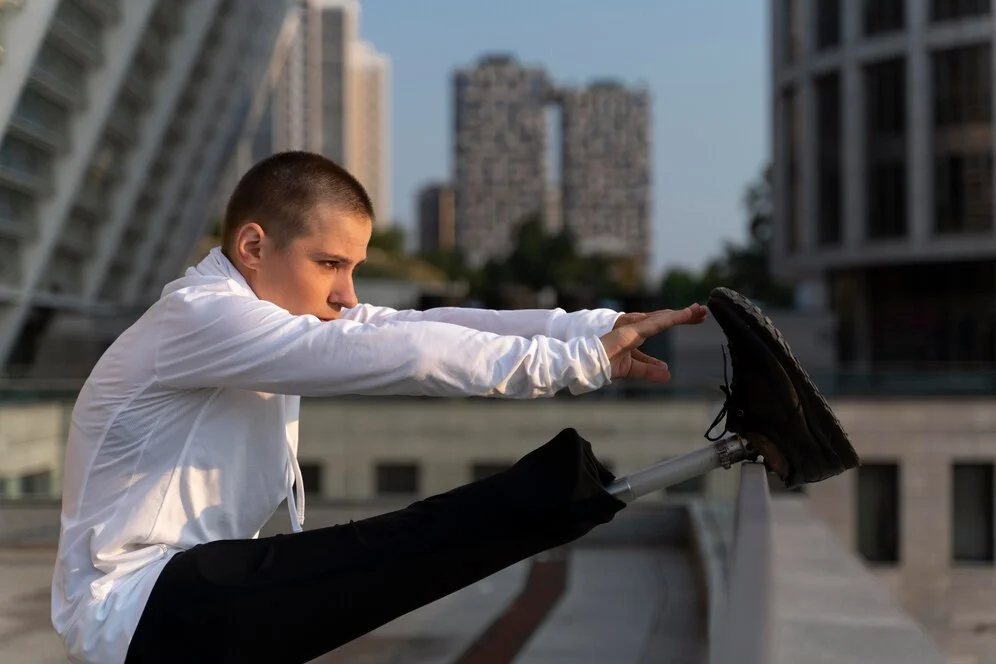Standing at the entrance of a martial arts academy for the first time can feel intimidating. The rhythmic sounds of bare feet on training mats, the sharp crack of strikes against pads, and students moving in synchronised forms might seem overwhelming. Yet Kung Fu training for beginners offers one of the most rewarding paths to physical and mental growth.
While commercial gym classes borrow martial arts moves purely for fitness, you can develop a comprehensive set of skills through traditional methods by taking Kung Fu training for beginners. These methods have been refined over centuries to simultaneously build strength, flexibility, and mental focus.
Building Strong Foundations
To begin with, students must first master the basics as the foundation of Kung Fu training starts with stance work. While it might not look as exciting as flying kicks or elaborate forms, proper stances create the base for every technique you learn. Think of it as building a house – nothing else stands properly without solid foundations. Students typically begin with horse stance, bow stance, and cat stance, holding each position to develop leg strength and stability.
Mastering the Forms
Forms, known as Taolu in Chinese, represent the next crucial element of training. These choreographed sequences contain the essence of Kung Fu’s fighting techniques, breathing methods, and internal energy work. These forms become more than memorised movements through regular practice – they transform into dynamic exercises that build cardio fitness, strength, and martial understanding.
The Art of Breathing
Breathing techniques integrate seamlessly with form practice. Proper breathing enhances power generation, maintains energy levels during training, and helps develop internal force. Kung Fu training for beginners teaches students to coordinate their breathing with different movements, creating a harmonious flow between body and mind.
Essential Combat Techniques
Basic striking techniques form another cornerstone of training. Punches, kicks, blocks, and palm strikes are practised repeatedly until they become natural responses. This repetition builds muscle memory and teaches proper body mechanics for generating power efficiently.
The Path of Mental Development
Kung Fu training doesn’t stop at physical techniques. Mental development plays an equally important role. Through focused practice, students cultivate patience, discipline, and resilience. These qualities extend far beyond the training hall and can positively impact work, study, and personal relationships.
Understanding Real Applications
Partner exercises introduce the practical application of techniques learned through forms and basic training. Working with partners teaches proper distance, timing, and how to adapt movements to different situations. This collaborative practice helps students understand the effectiveness of their training.
Training Intensity and Progression
Kung Fu training for beginners requires dedication and consistent effort. A typical session might last between 60 to 90 minutes, combining cardiovascular conditioning, strength training, and technical practice. Students often train multiple times weekly, allowing adequate rest and recovery time between sessions.
The Role of Traditional Training Methods
While modern training approaches have their place, ancient methods remain fundamental to Kung Fu practice. Techniques like wall striking, stance holding, and traditional conditioning exercises develop unique attributes that contemporary training methods often overlook. These time-tested approaches build internal power and physical resilience simultaneously.
Time for Action
If you’ve been searching for a training method that develops both body and mind, Kung Fu offers a time-tested path to personal growth. The ancient wisdom embedded in traditional training methods provides benefits that extend far beyond self-defence. Find a qualified academy that teaches traditional techniques and applications while maintaining the essence of this authentic martial arts. Kung Fu training for beginners begins with a single step – the moment you walk through those training hall doors.







